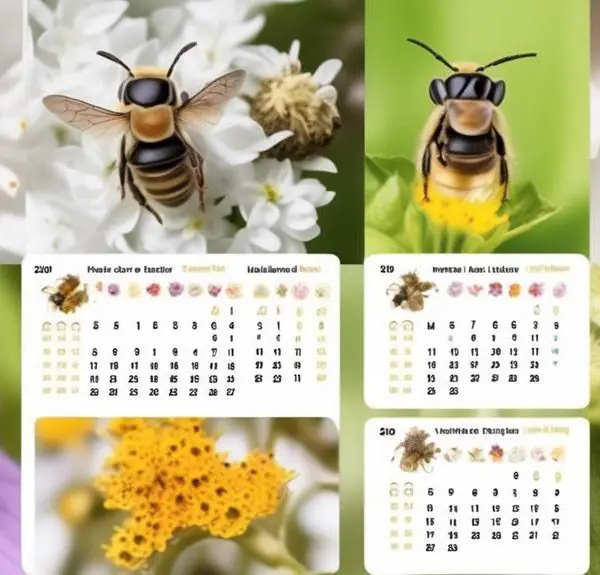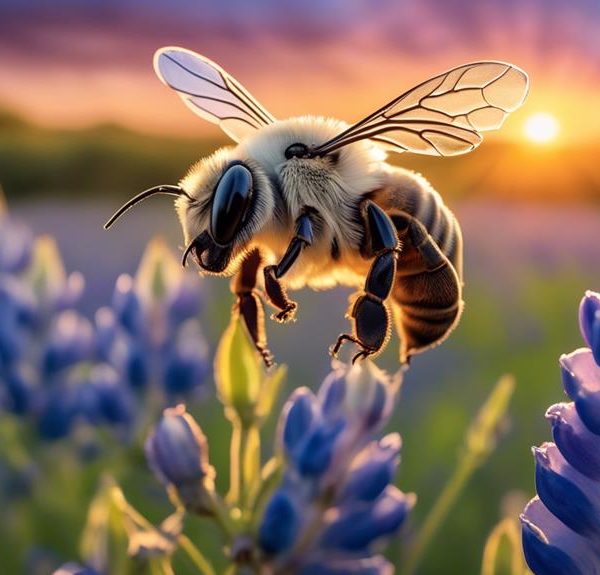Intriguing and industrious, learn how leafcutter bees' unique habits shape our ecosystems and why they're cutting perfect circles in your garden's foliage.

Leafcutter Bee Facts
Imagine you're walking through your garden and you spot a bee, not collecting pollen, but meticulously cutting away a perfect circle from a leaf. This isn't a typical honeybee, but rather a leafcutter bee, a solitary insect with a penchant for precision.
Leafcutter bees are fascinating creatures with unique behaviors and life cycles that set them apart from other bee species. You might be wondering why this bee is so interested in your foliage, and what role it plays in your local ecosystem.
Well, the details might surprise you and make you see these diligent insects in a new light.
Key Takeaways
- Leafcutter bees are solitary creatures that create their own nests by cutting leaf fragments with their sharp mandibles.
- Their lifecycle consists of four stages: egg, larva, pupa, and adult, with the mature bee emerging ready to mate and start the cycle anew.
- Leafcutter bees play a vital role as pollinators, contributing to biodiversity and plant reproduction through their pollen-gathering behavior.
- Creating a bee-friendly habitat with diverse flowering plants and avoiding pesticides is important for attracting and protecting leafcutter bees in your garden.
Understanding Leafcutter Bee Behavior
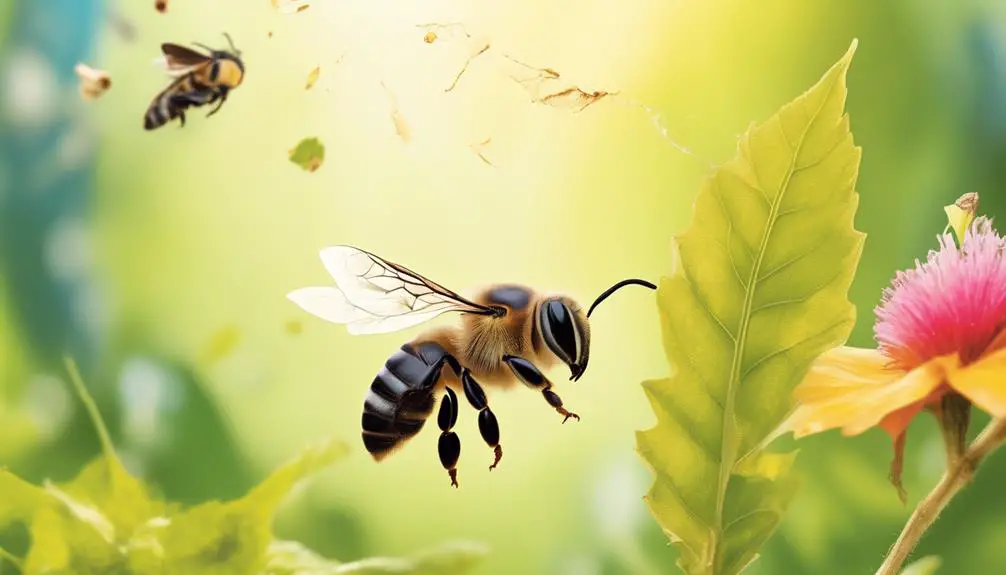
To truly grasp leafcutter bee behavior, you need to delve into their unique hive dynamics, intricate mating rituals, and fascinating leaf-cutting techniques.
Unlike honeybees, leafcutter bees are solitary creatures, each female creating her own nest rather than participating in a communal hive. This self-reliance is a cornerstone of their behavior, dictating their interactions and work ethic.
In terms of mating rituals, there's a certain hierarchy. Males, born earlier, await emerging females. Once mated, the female promptly sets about nest-building, displaying her industrious nature. She uses her sharp mandibles to cut leaf fragments, hence their name, which are then transported to her chosen nest site.
The leaf-cutting technique is an art in itself, an integral part of the leafcutter bee's survival. You'd be fascinated to see the precision with which they cut, their mandibles working like tiny scissors. The leaf pieces are tailored to fit the nest, forming a protective cocoon for their offspring. The leaf fragments also serve to store pollen and nectar, providing nourishment for the larvae.
Understanding this behavior offers insights into their significant ecological role as pollinators, a role often overshadowed by their more social bee counterparts.
Leafcutter Bees: Ecosystem Role
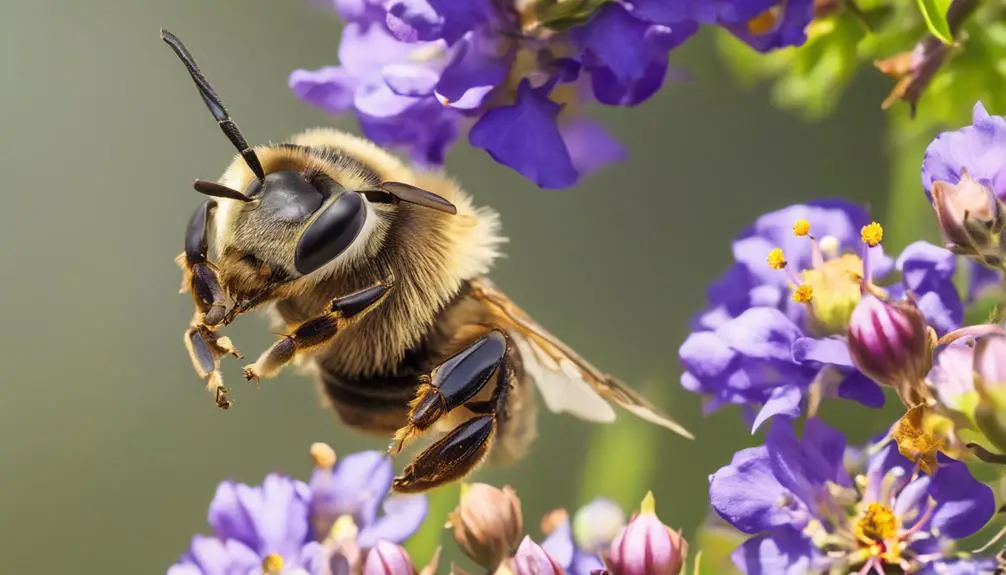
While appreciating the intricacies of their behavior, it's equally important to acknowledge the crucial role leafcutter bees play in our ecosystems. These bees are renowned pollinators, particularly adept at cross-pollination. They're not selective, visiting a variety of plants, and in the process, they facilitate biodiversity.
As they flit from flower to flower, these bees gather pollen on their hairy bodies. When they visit the next bloom, some of this pollen rubs off, fertilizing the flower. This exchange is vital for plant reproduction. Without leafcutter bees, many plant species would struggle to reproduce, impacting both flora and fauna.
Moreover, leafcutter bees are unique in their leaf-cutting behavior. They use these leaf pieces to construct their nests. This activity contributes to the natural decomposition process, as the cut leaves biodegrade more rapidly, returning nutrients to the soil.
In essence, leafcutter bees are invaluable players in the circle of life. Their actions, often overlooked, help maintain the health and diversity of our ecosystems. They're proof that even the smallest creatures can have a significant, positive impact on their environment.
The Leafcutter Bee Lifecycle
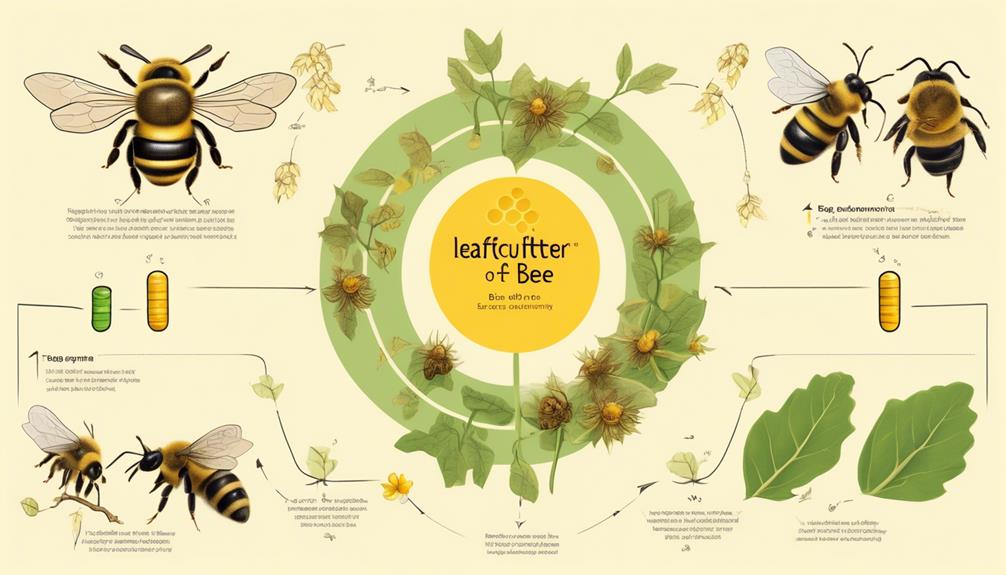
Let's delve into the fascinating lifecycle of the leafcutter bee, a journey that begins with a single egg and unfolds into a complex interplay of growth, metamorphosis, and survival. The lifecycle is split into four distinct stages: egg, larva, pupa, and adult, each with its unique characteristics and roles.
Here's a detailed breakdown in a table format:
Stage | Duration | Description |
|---|---|---|
Egg | 1-2 weeks | The queen lays an egg in a leaf cell, supplying it with pollen and nectar for nourishment |
Larva | 2-3 weeks | The hatched larvae feed on the provisions, growing and molting several times |
Pupa | 2-3 weeks | The full-grown larva spins a cocoon, metamorphosing into an adult bee |
Adult | 1-2 months | The mature bee emerges, ready to mate and start the cycle anew |
Understanding this lifecycle allows you to appreciate the leafcutter bee's contributions to biodiversity. The bee's role isn't just about pollination; it's also a vital player in the ecosystem's intricate web, shaping the environment and influencing other species. So, the next time you see a leafcutter bee, remember the complex journey it's been through.
Distinguishing Leafcutter Bees From Others
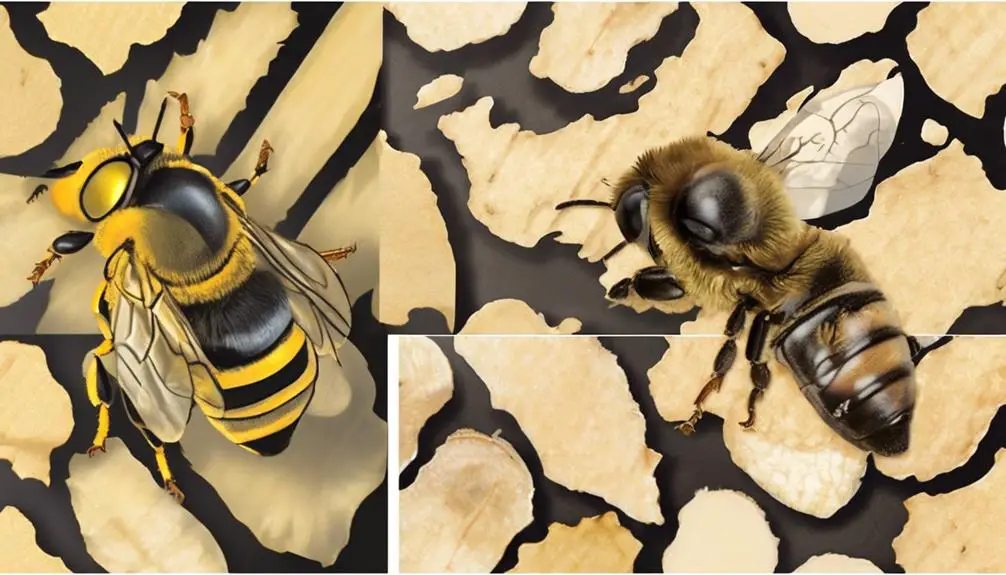
Having explored the complex journey of a leafcutter bee's life, you're now in a position to distinguish these industrious insects from other bees in your backyard or local park.
A crucial character that sets them apart is their behavior of cutting leaf circles which are then used to construct their nests. You'll often find these neat, round cuts in the leaves of your shrubs, a unique signature of leafcutter bees.
Physically, leafcutter bees aren't as hairy as bumblebees, nor are they as large. They're generally more slender, with a body length of about 1/4 to 1/2 inch. Unlike honeybees, leafcutter bees don't carry pollen on their hind legs. Instead, they've specialized hairs on the underside of their abdomen, called a scopa, where they store pollen.
In terms of coloration, leafcutter bees are often mistaken for wasps due to their dark, often metallic color. They lack the distinctive yellow and black stripes of many bee species.
Attracting Leafcutter Bees to Your Garden
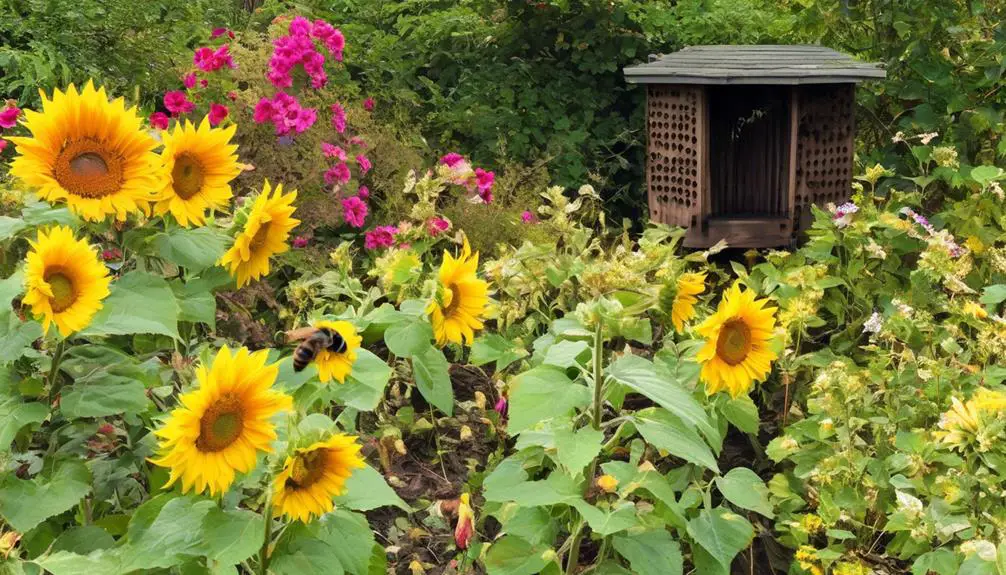
If you're interested in inviting these fascinating insects to your garden, understanding the environmental conditions and specific plant varieties that attract leafcutter bees is crucial. Leafcutters prefer warm climates and are most active during the summer. They are attracted to gardens with a diverse variety of flowering plants, particularly those with a high nectar or pollen count.
Creating a bee-friendly habitat involves providing food sources, nesting sites, and avoiding pesticides. For food, leafcutters need blooming plants throughout the growing season. Here's a brief list of their favorites:
Plant Varieties | Blooming Season |
|---|---|
Alfalfa | Summer |
Clover | Spring, Summer |
Roses | Spring, Summer, Fall |
Fruit Trees | Spring |
Next, provide nesting sites. Leafcutter bees are solitary and prefer to nest in small cavities. You can make a simple bee house by drilling holes into a block of untreated wood. Finally, avoid using pesticides in your garden. These chemicals can harm or kill leafcutters.
Conclusion
In wrapping up, you've learned about the leafcutter bee's intriguing behavior, vital role in our ecosystem, their lifecycle, and how to distinguish them from other bees.
You've also discovered ways to attract these beneficial insects to your garden. Understanding these facts underscores the significance of these tiny pollinators in biodiversity and food security, and highlights our role in conserving and promoting their populations.
Remember, every leaf cut is a sign of a healthier ecosystem.

